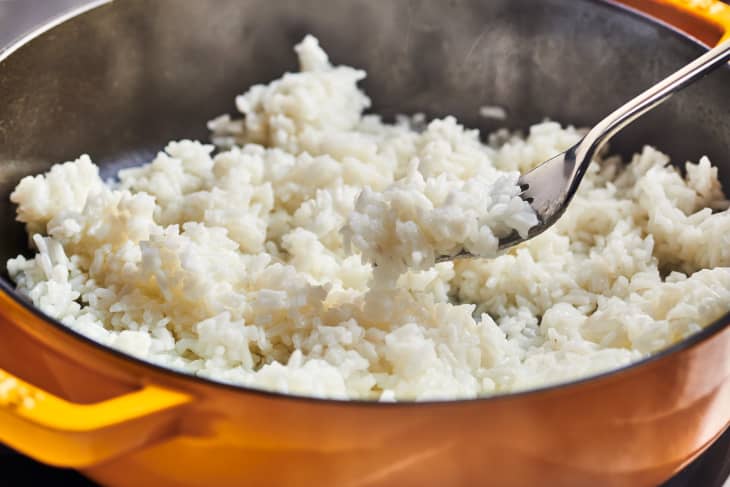My Grandma’s 37-Year-Old Secret for More Flavorful Rice Will Convince You to Never Cook It Another Way
I come from a big Latin American family and I grew up eating a lot of rice. All of my relatives cooked rice for most meals and special occasions, and a pot of rice was one of the first things I learned how to cook when I was a kid. My favorite rice, though, was my grandma’s. It didn’t look any different from the rice that was being dished up at anyone else’s house, including my own, but it had a special something I couldn’t quite put my finger on.
Once I was older and more aware that the flavor was due to something more than Grandma Magic (™), I asked her about it. She told me that her trick was two simple ingredients: bay leaves and turmeric.
Why Bay Leaves and Turmeric Make Rice Taste Better
Bay leaves are typically tossed into long-simmering dishes like soups (looking at you, chicken noodle), stews (like chile colorado), and pasta sauces (it’s common in homemade marinara) to add to the layers of flavor. The flavor of the bay leaf itself is pretty mild. You’re not likely to see recipes with bay leaf as the primary flavor, for example. But its subtlety can really shine in a pot of rice. Rice is often cooked in plain water where there are few other flavors to compete with a bay leaf’s understated presence.
I know what you’re thinking: “Turmeric has a strong flavor,” and “Won’t it make the rice yellow?” Yes, turmeric can be very strong and aromatic and it does change the color of everything it touches (including your fingers), but you only need to add a pinch. While it can take over as the star of the show in larger quantities, adding just a pinch of turmeric to a whole batch of rice helps to give the flavor just a little bump.
Together these two spices give rice a punch of extra flavor. They give the whole batch more body and depth without drastically altering the flavor, so you can still use the rice in a variety of applications.
How to Enhance the Flavor of Rice with Bay Leaves and Turmeric
It’s as simple as adding 1 bay leaf and a pinch of turmeric to the cooking liquid at the beginning of the cooking process. I stir both ingredients into the rice with my usual water, salt, and splash of olive oil, then proceed with cooking as usual. This works just as well on the stovetop as it does in a rice cooker, or even the oven if baked rice is your thing. You can add these spices to any kind of rice; I most often cook white rice, but have also added it to brown and wild rice.
Depending on how much rice you’re cooking (I typically cook between 1 and 2 cups of rice at a time) the rice will take on a subtle yellow color and have a slightly herby scent. When the rice is ready, discard the bay leaf and give the whole batch a stir and fluff with a fork, That’s it!
A Few Tips for Success
- Use water. This method works best with rice cooked in plain water. If you prefer to cook your rice in broth, the flavor enhancement will be less noticeable, as the broth brings both flavor and color of its own.
- Know your bay leaves. Most of the bay leaves you’ll find at the grocery store are dried Turkish bay leaves that are milder than the rarer California bay leaves that are more often sold fresh. Both will deepen the flavor of rice, but fresh bay leaves add a stronger, more medicinal flavor.
- Use fresh spices. Spices lose potency as they age. If you’re relying on just a few to provide the backbone of a dish, they should be as fresh as possible. Check the expiration of the spices in your kitchen, if they’re over a year old it might be time for a refresh.
